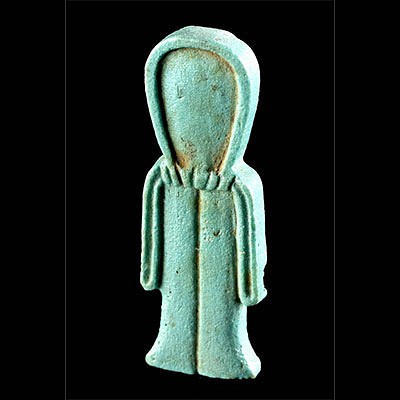18th C. Neoclassical Glass Intaglio - Nude Male w/ Horn
Lot 112
About Seller
Artemis Gallery
686 S Taylor Ave, Ste 106
Louisville, CO 80027
United States
Selling antiquities, ancient and ethnographic art online since 1993, Artemis Gallery specializes in Classical Antiquities (Egyptian, Greek, Roman, Near Eastern), Asian, Pre-Columbian, African / Tribal / Oceanographic art. Our extensive inventory includes pottery, stone, metal, wood, glass and textil...Read more
Categories
Estimate:
$600 - $800
Absentee vs Live bid
Two ways to bid:
- Leave a max absentee bid and the platform will bid on your behalf up to your maximum bid during the live auction.
- Bid live during the auction and your bids will be submitted real-time to the auctioneer.
Bid Increments
| Price | Bid Increment |
|---|---|
| $0 | $25 |
| $300 | $50 |
| $1,000 | $100 |
| $2,000 | $250 |
| $5,000 | $500 |
| $10,000 | $1,000 |
| $20,000 | $2,500 |
| $50,000 | $5,000 |
| $100,000 | $10,000 |
| $200,000 | $20,000 |
About Auction
By Artemis Gallery
Nov 4, 2021
Set Reminder
2021-11-04 10:00:00
2021-11-04 10:00:00
America/New_York
Bidsquare
Bidsquare : Ancient & Ethnographic Art Through The Ages
https://www.bidsquare.com/auctions/artemis-gallery/ancient-ethnographic-art-through-the-ages-7799
Ancient art from Egypt, Greece, Italy and the Near East, as well as Asian, Fossils, Pre-Columbian, Native American, African / Tribal / Oceanic, Fine art, and much more! All categories, all price ranges... all legally acquired and guaranteed to be as described or your money back. Artemis Gallery info@artemisgallery.com
Ancient art from Egypt, Greece, Italy and the Near East, as well as Asian, Fossils, Pre-Columbian, Native American, African / Tribal / Oceanic, Fine art, and much more! All categories, all price ranges... all legally acquired and guaranteed to be as described or your money back. Artemis Gallery info@artemisgallery.com
- Lot Description
Northern Europe, Neoclassical period, ca. 18th to early 19th century CE. A fascinating amber-hued glass intaglio featuring a scene of a nude, muscular figure in composite profile, walking as he holds a horn in one hand and a vessel in the other, with a cloth or sash suspended over that wrist. Just who is this figure? Perhaps he represents a Bacchanalian reveler, an athlete, or an attendant to a deity - but he most certainly represents the rising fascination with the Classical world during the 18th century. The Neoclassical period saw immense interest in the Classical world, in part inspired by the budding science of archaeology. Artists looked to the deep past for inspiration, yet brought an imaginative sensibility to their depictions of it. A lovely Neoclassical intaglio, nicely wrapped with a black leather border. Size: .875" W x 1.5" H (2.2 cm x 3.8 cm) Size: .8" W x 1.5" H (2 cm x 3.8 cm)
Bacchanalia - also called Dionysia - were religious festivals to honor Bacchus, the god of wine, in ancient Rome. Scholars believe that they originated as the rites for fertility gods. Bacchanalia included processions, dramatic performances, and drinking feasts. The most famous of all was known as Oschophoria meaning "Carrying of the Grape Clusters". Introduced to Rome from lower Italy, Bacchanalia were initially held in secret and only attended by women for three days a year. In time, men were invited to participate, and celebrations occurred as often as five times a month. These festivals attained a reputation for orgies that led the Roman Senate to prohibit the Bacchanalia throughout Italy, with some exceptions in 186 BCE. Interestingly, a copy of the decree has survived the tests of time, in addition to an account by the Roman historian Livy. However, despite this decree, the Bacchanalia continued for years in southern Italy.
Provenance: private Dere collection, New Jersey, USA; ex-Madame Frances Artuner collection, Brussels, Belgium, acquired in the 1960s
All items legal to buy/sell under U.S. Statute covering cultural patrimony Code 2600, CHAPTER 14, and are guaranteed to be as described or your money back.
A Certificate of Authenticity will accompany all winning bids.
PLEASE NOTE: Due to recent increases of shipments being seized by Australian & German customs (even for items with pre-UNESCO provenance), we will no longer ship most antiquities and ancient Chinese art to Australia & Germany. For categories of items that are acceptable to ship to Australia or Germany, please contact us directly or work with your local customs brokerage firm.
Display stands not described as included/custom in the item description are for photography purposes only and will not be included with the item upon shipping.
#157312Light scratching on surface commensurate with age. Remains of old label on leather border. Could easily be made into a wearable piece of jewelry.Condition
- Shipping Info
-
All shipping is handled in-house for your convenience. Your invoice from Artemis Gallery will include shipping calculation instructions. If in doubt, please inquire BEFORE bidding for estimated shipping costs for individual items.
-
- Buyer's Premium



 EUR
EUR CAD
CAD AUD
AUD GBP
GBP MXN
MXN HKD
HKD CNY
CNY MYR
MYR SEK
SEK SGD
SGD CHF
CHF THB
THB













